When we launched the very first Surface Design Industry Survey last month, we had no idea how many surface designers would be willing to participate, sharing the intimate details of their businesses and income with us.
But I’m so pleased to say that our industry didn’t disappoint!
We had 347 surface designers complete our survey.
P.S. In this post, I frequently switch back and forth between “I” and “we” because I did NOT conduct this survey alone. The truth is that it wouldn’t have been possible without help from my virtual creative assistant, Jena, so I want to thank her for her efforts – she’s amazing!
Why is this survey important?
Pricing in our industry is a notoriously difficult topic. In fact when I sent out a general survey to my community last spring, the #1 frustration you had was pricing. Well pricing and that so many seasoned designers weren’t willing to talk openly about it to newbies.
But not discussing it doesn’t do anyone any good!
As one of those more veteran designers, I can totally understand not wanting to share your prices for fear of being judged – I’ve felt that too! But if we continue to stay silent, the many aspiring designers that enter the industry each year will severely undersell themselves which in turn negatively affects us ALL!
And this isn’t just a theory… I literally saw this in the data of the survey.
New designers (those with less than 3 years of experience) when compared to more experienced designers (those with 6+ years experience), on average:
Charged $200 LESS when licensing a design
Charged $250 LESS when selling their art outright
and had an hourly freelance rate of $17 LESS per hour
And that’s why my sincerest hope with this survey is that it will not only create a more honest discussion about income in the surface design industry but that it will empower ALL of us to raise our prices!
So let’s get right into it…
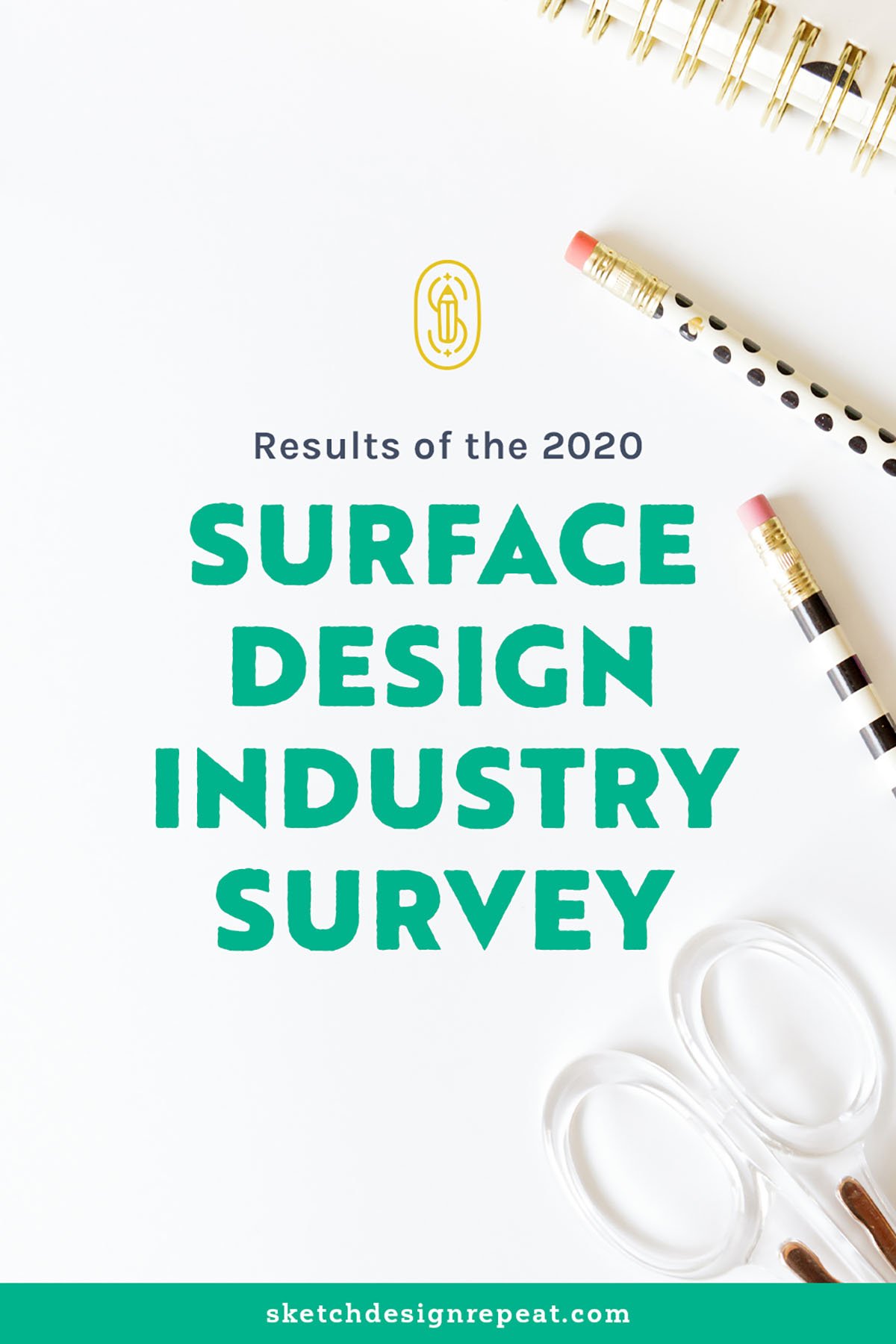
Survey Demographics
Our industry is a pretty diverse group of artists. We had participants from 38 countries spanning 6 continents (everywhere except Antartica of course), although ⅔ of designers are living in the US (51.6%), the UK (11.5%), and Australia (5.2%).
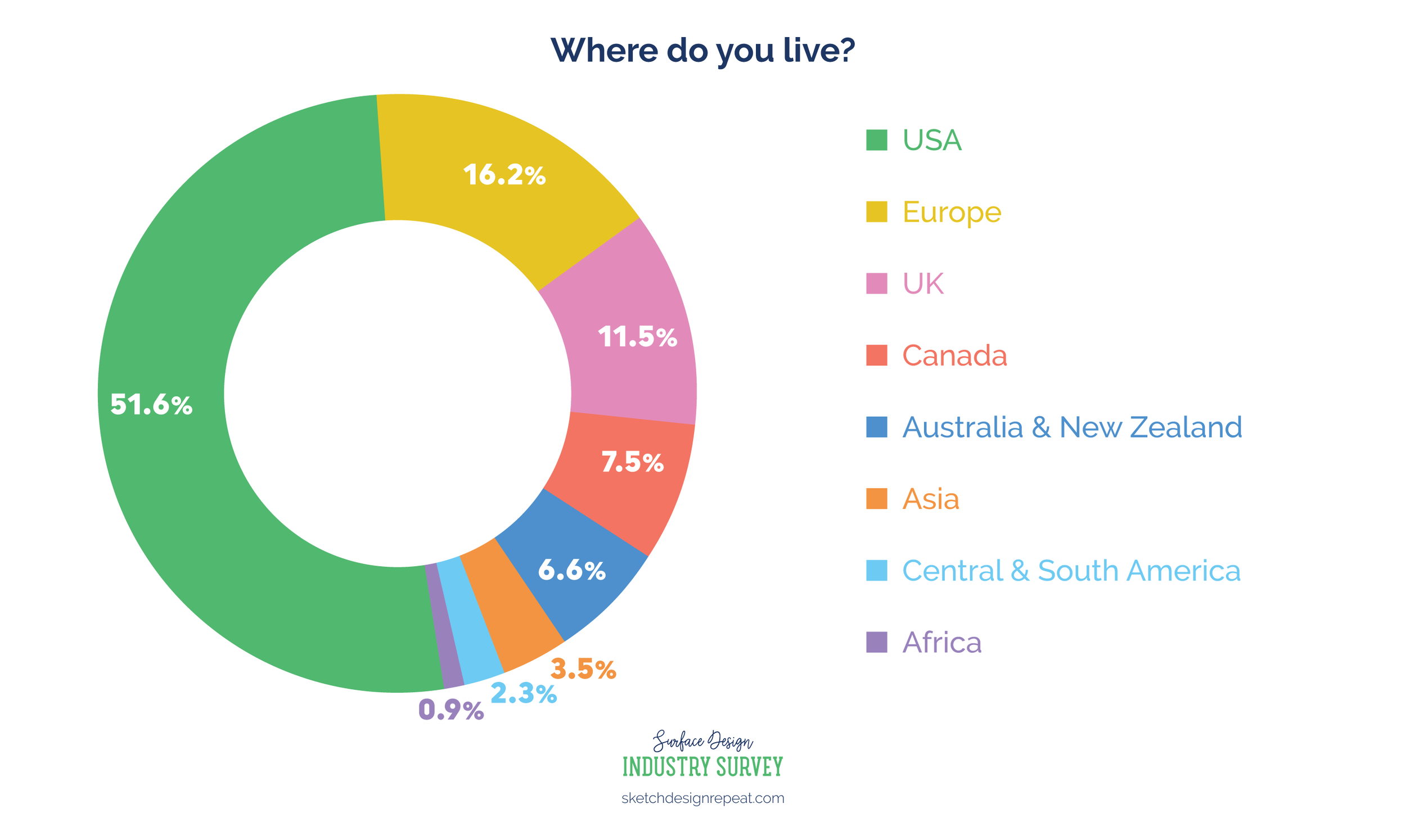
We also represent a very wide age range.
Although the average age is 38-46, I was very happy to see that +20% of participants were over the age of 50 and 12% were 30 and under – it just goes to show that you can be a surface designer at ANY age!
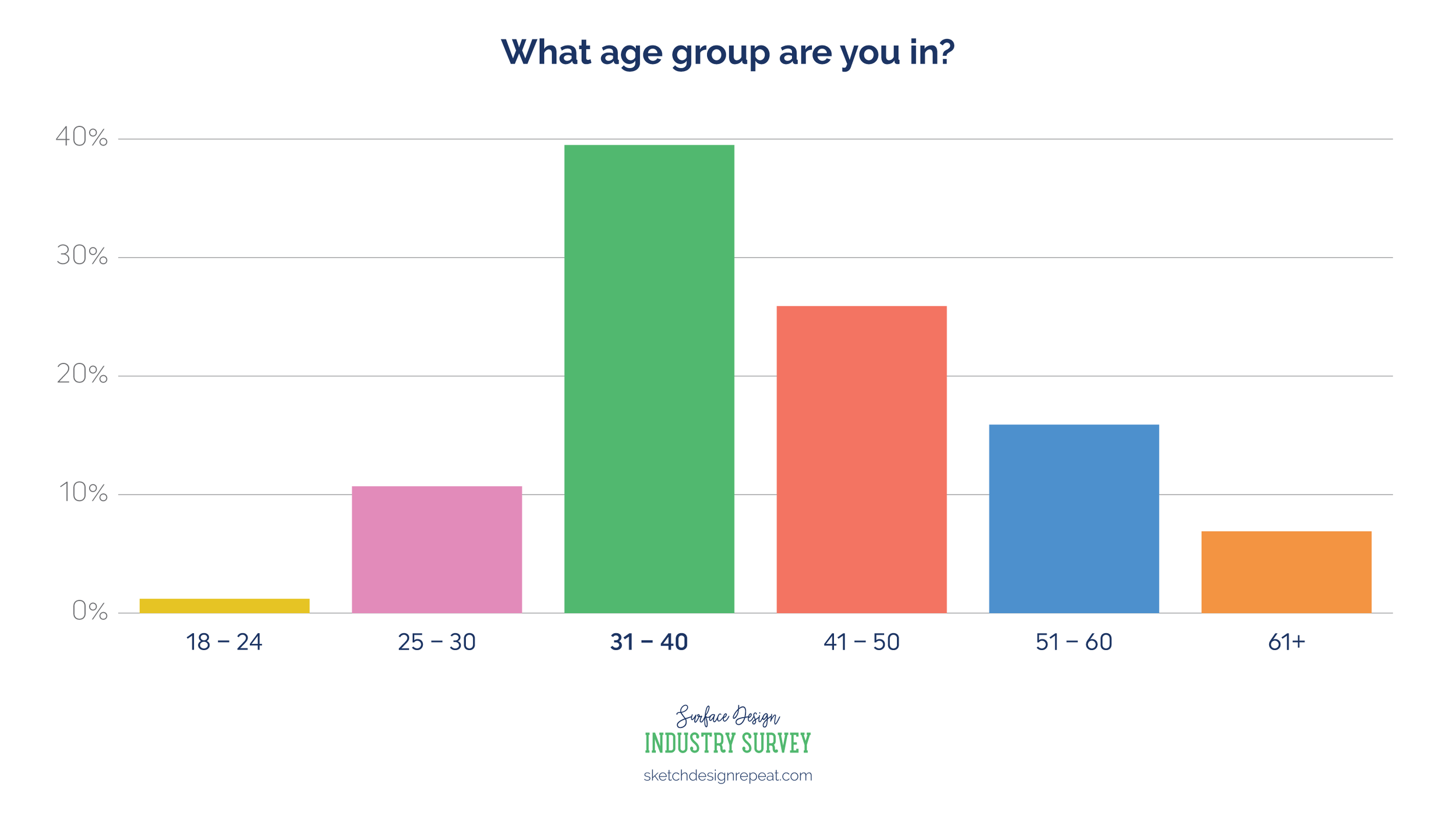
That doesn’t mean our industry is perfect though.
Because we also asked about gender, sexual orientation, and ethnicity.
Side Note: I realize these are all very sensitive questions and not everyone was comfortable answering them. And it’s why we included a “prefer not to answer” option so anyone could opt-out of providing the information.
But it was important for us to include these questions because I feel that diversity (in every form) should be celebrated and wanted to better understand if certain portions of the population are underrepresented in our industry. And from our survey, they are…
Over 96% of participants identify as female, 92% identify as straight, and 78% identify as white/caucasian. Which means that men, the LGBQT+ community, and non-white artists are under-represented.
Now I don’t have a solution for how we can develop more diversity in surface design, but I do think it’s something we should all reflect upon. Because in my opinion, variety is the spice of life AND in design!
Work Experience
The amount of experience in our industry varied widely, although roughly a third of participants were new designers with less than 1 year of experience (32.9%). But I was also encouraged to see that 22.2% of respondents had been in the industry for 6+ years.
It’s nice to see that it IS possible to be a surface designer in the long-term.
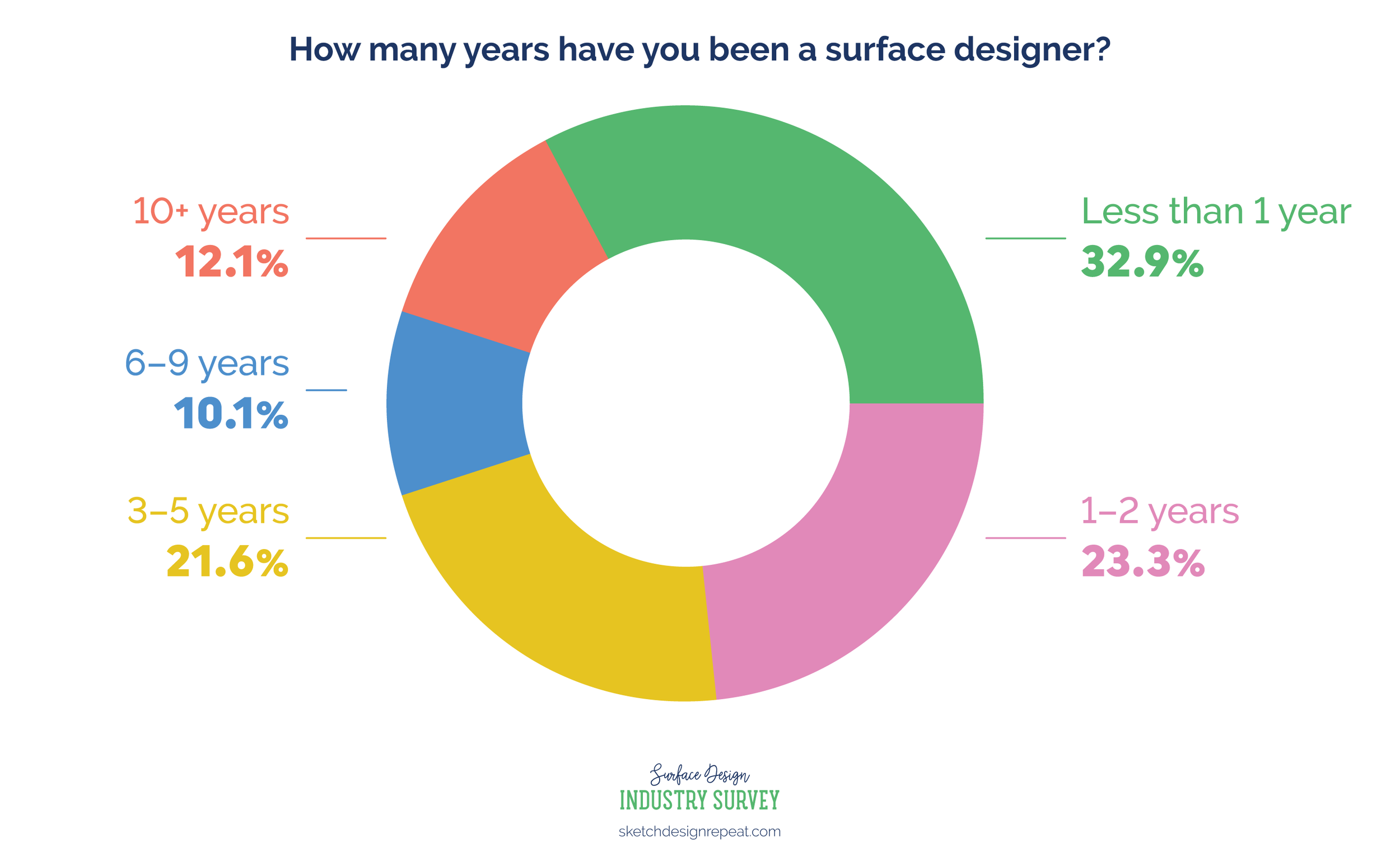
We also asked about whether artists considered themselves full-time, part-time, or just hobbyists. And the lack of experience shown in the previous graph makes a lot of sense when you look at the graph below and see that 29.7% of participants were hobbyists and likely entered the industry within the last year.
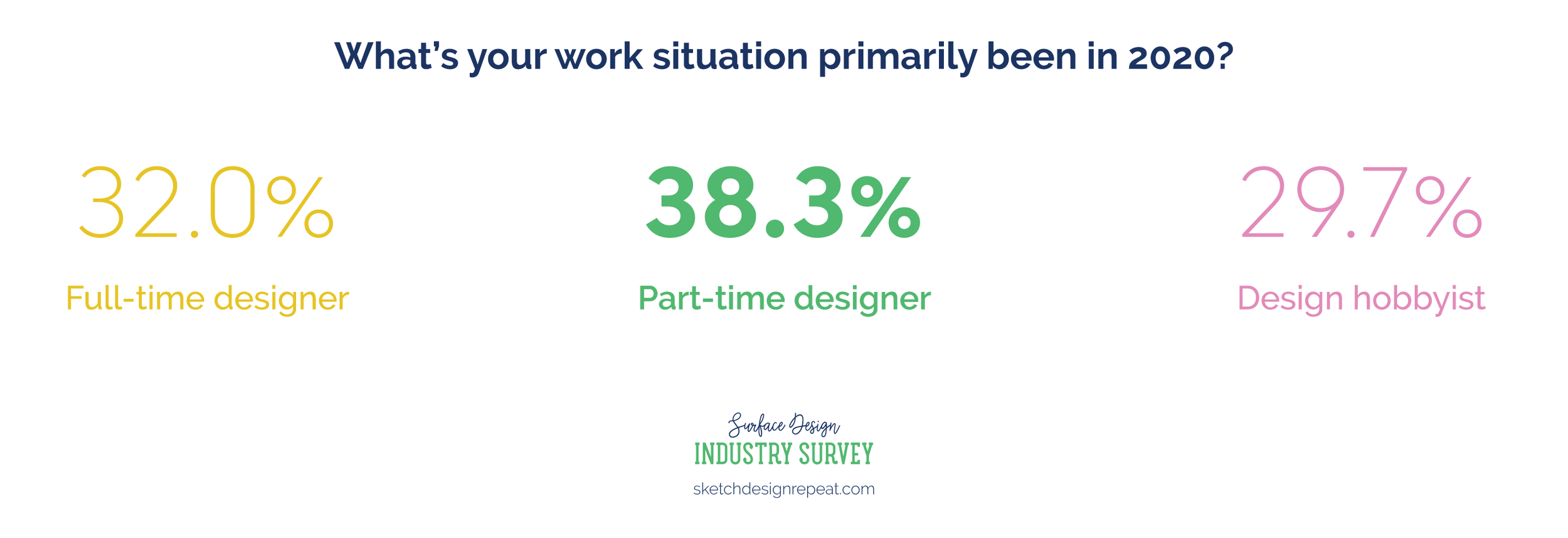
A Few Notes About Hobbyists: While we didn’t ask design hobbyists whether they had ambitions to become part or full-time surface designers in the future, our assumption was that the majority of them plan on doing so – it’s a question we’ll likely add into next year’s survey.
Also, all the income data shared below is blended – it accounts for all respondents, including hobbyists. This means that the income and pricing infographics skew to much lower figures than if only full and part-time designer data was used.
Income
The income and pricing section of the survey is the part that I was most curious about and I’m sure I’m not alone! Let’s start with the total estimated income for 2020 amongst designers.
Total Yearly Income
As you can see from the graphic below, the most common income was less than $5k (37.2%) followed by $25-50k (19.6%) with the average income being around $18-30.5k.
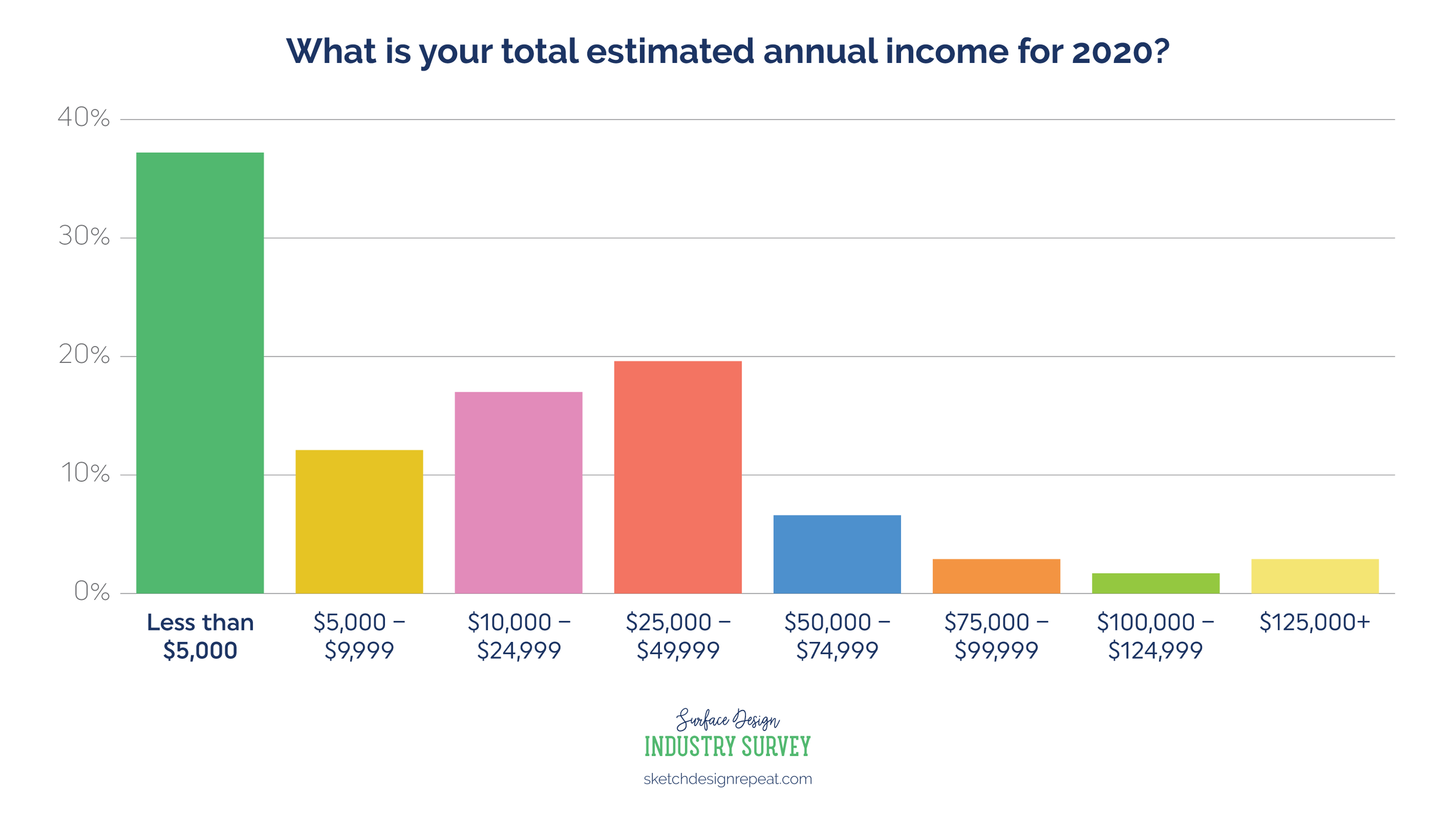
However, if when we looked at just the respondents who said they were full-time designers – which is available in our detailed survey report – the average income went up considerably to $27.5-42.5k, which is a much rosier outlook than what the graph above suggests.
Total Surface Design Income
We saw a similar result when we asked about estimated income just from surface design (which we defined as licensing, buyouts, and freelance commission projects).

Over 40% of designers made less than $1k from surface design in 2020 with an average of $5-10.5k. But for full-time designers, again the average went up quite a bit to $12.5-22k.
Other Streams of Income
But we didn’t stop at surface design income. Because multiple streams of income are so important to the stability of self-employed businesses, we also asked which other common income streams each designer used.
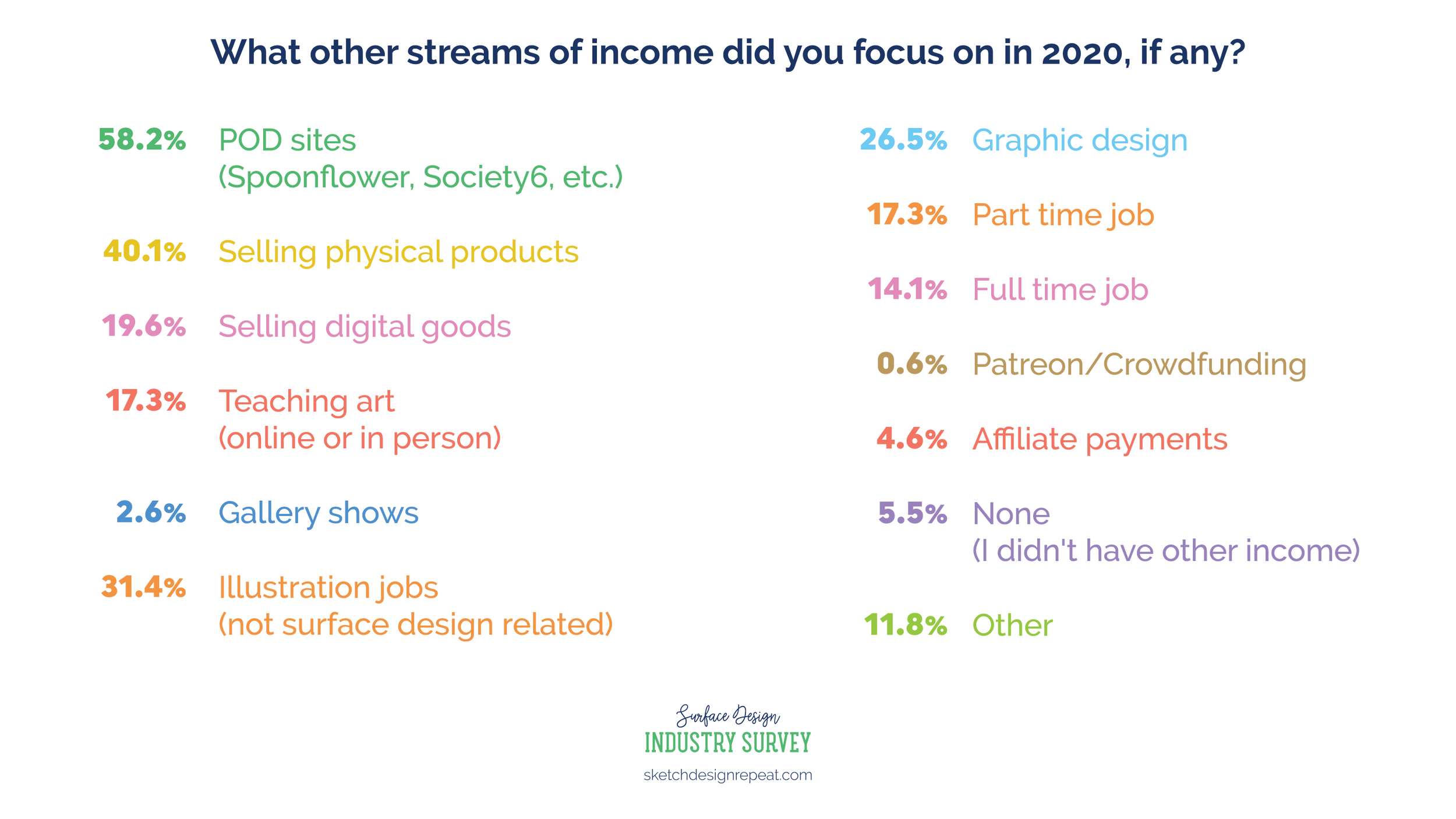
POD sites were clearly the most popular option (58.2%), followed by selling physical products (40.1%), non-surface design illustration jobs (31.4%), and graphic design (26.5%). And the income had much the same result as the previous income questions.
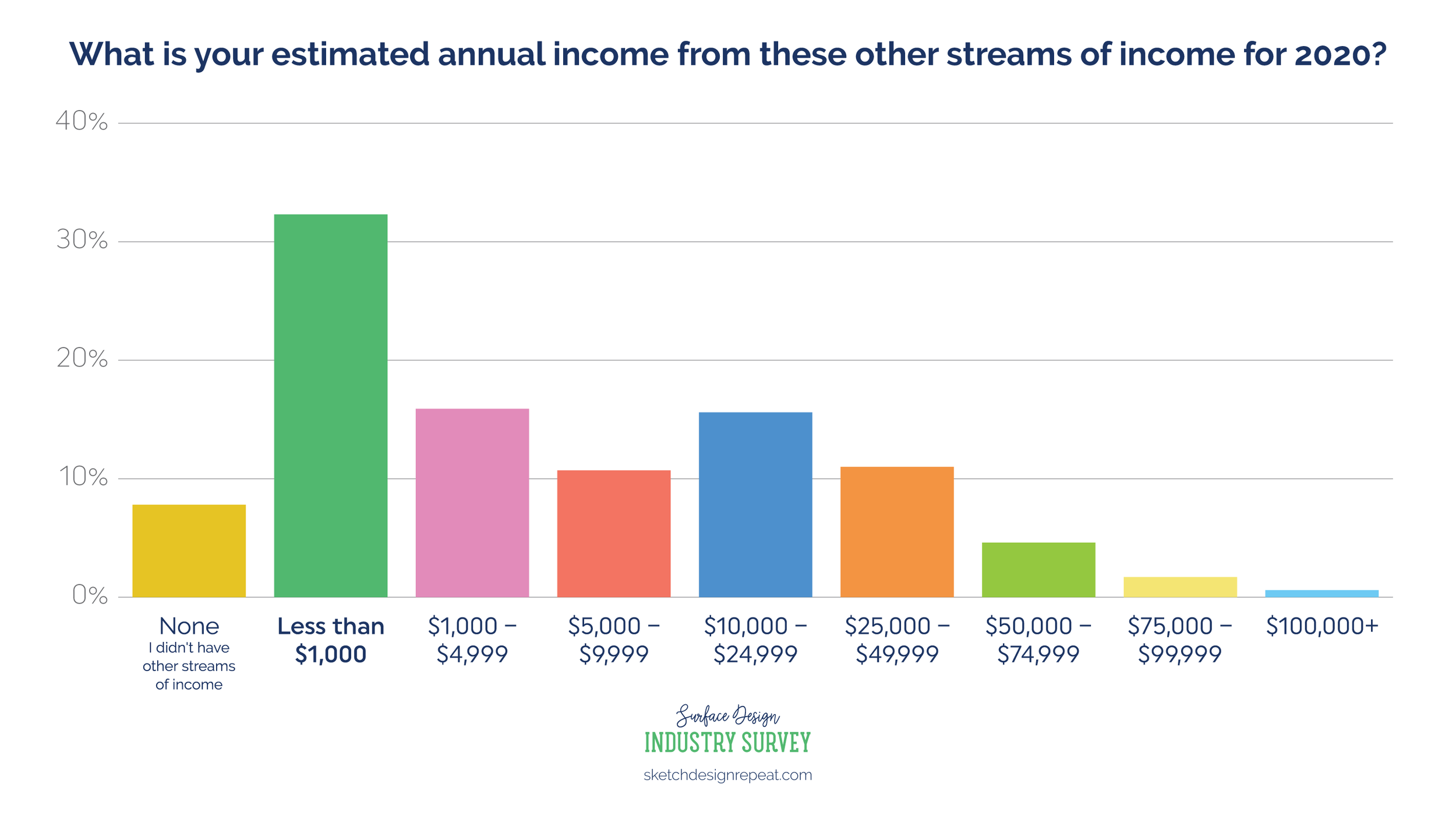
Over 40% made less than $1k on these income streams with a total average of $9-17k. And once again the average for full-time designers was higher at $12.5-22.5k.
What I find most interesting about this is that designers seem to make just as much (or MORE in certain income brackets) from other streams of income as they do directly from surface design. To me, this is further proof that when done correctly, multiple streams of income is a VERY important aspect of maintaining a sustainable self-employed business.
Financial Support
We also thought it was important to ask whether a designer was financially supported by someone else to get a better understanding of how artists are making ends meet and I’m glad I did given the low average income of surface designers.
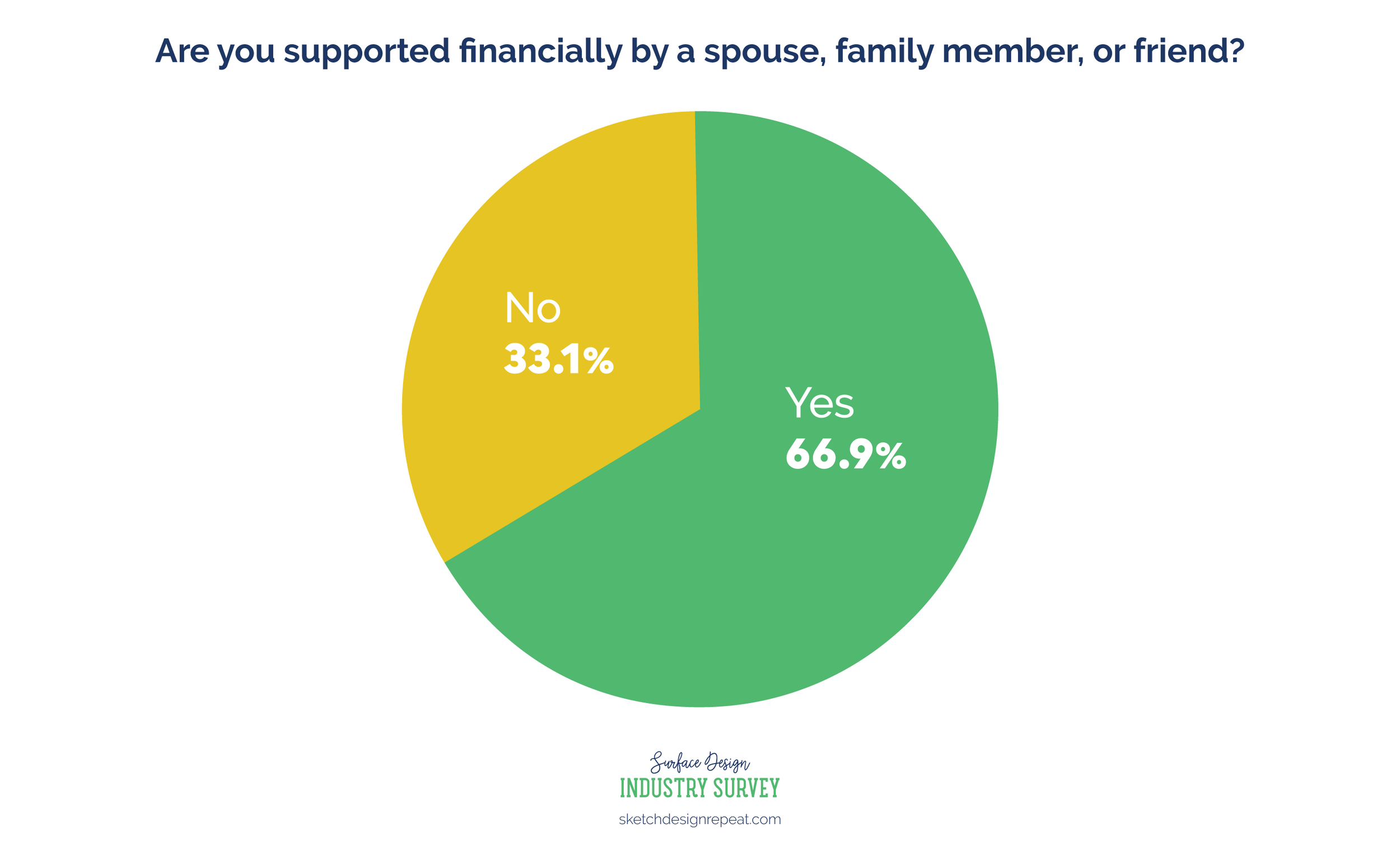
Given that the average global annual income is around $18k and the majority of our participants are living in the US, UK, and Australia where the average annual income is much higher (around $42-62k), it’s not surprising to see that two-thirds of participants were supported financially.
I’d also like to share that designers received financial support at ALL income levels. Of course, the support rate was much higher at lower income levels – it was 82.2% for those under $5k – and the percentage decreased significantly for designers earning $50k or more. But this definitely illustrates that what’s considered a living wage can vary widely depending on where you live.
Covid’s Effect on Designers
I think everyone can agree that 2020 was NOT a normal year. Covid deeply affected many aspects of our lives, so this survey wouldn’t have been complete without also asking how the pandemic influenced a designer’s business.
We left this as an open-answer question to give every participant the opportunity to share their experience, writing as little or as much as they wanted. And although there was lots of variation in the responses, a few recurring themes emerged:
Work/life balance was deeply affected, especially for designers with children.
Sales and client work slowed down for many which often meant lower income.
Less work meant more time for portfolio work, although many were feeling a lack of creative motivation.
Lots of designers pivoted to other pursuits that they had more control over (something I totally relate to as it’s what I did in 2020).
Those who were new to the industry didn’t feel like Covid changed that much for them as they hadn’t started their career yet.
One thing is for certain: 2020 will be a hard year to forget!
And although I realize this may not have been the ideal year to start gathering intel about our industry, at least we’ve started somewhere and it’s something we plan on doing every single year.
When I click the button to get the report there isn’t a place to put my email address 🙂 I’m on mobile version… would love to receive the report!
Christy@itsybelle.com
Sorry about that Christy! I’ve double-checked your email though and it looks like you’re set up to receive the report on the 14th 🙂
This is such valuable research Shannon. The surface design industry has changed so much over the past 10 years. I remember being hugely frustrated when I bought that enormous (and expensive!) ‘Pricing and Ethical Guidelines’ Handbook to discover that it doesn’t really cover the surface design industry in much detail, and with such a huge range of prices listed (without any examples of the work) isn’t much help. Without my agent I would have definitely underpriced my work. Even with her taking 40%, I still earn more than I would if I’d been setting my own prices. And even with experience, I have a tendency to underprice for private commissions because I find it hard to ask friends and family for more. Craziness!! It’s such a hard industry to get started in. I do tell other artists/surface designers how much I got paid for something if they ask me privately because I think it’s important to share this info to help them and the industry generally. I would never post that publicly though. It seems so crass somehow.
I’m looking forward to receiving my detailed report. Thanks again. Sooo important to have these conversations!!
Thanks Shannon for your initiative and execution of this survey, you’ve done a great job and it’s interesting to see the outcomes. I, like Bex, have shared prices and info with people privately, especially in regards to fabric royalties.
Thank you so much for doing this research! I’m so interested to see the full report on Thursday. As an aspiring surface pattern designer, it’s so helpful to have a realistic view of the industry.
What an undertaking and thank you a million times over for this valuable information, Shannon and team!
OMG this information is huge! Thank you for really diving deep into other creative areas. This really helps as a designer to figure out the value of what I do.
Again many thanks.
-susie
This is an interesting and necessary survey. During this year, it has most definitely had me reflect while also taking the time to learn and change my processes and time management.
I actually had jammed packed days with a few loosing motivation here and there.
As far as salaries and sharing the collective results with peers I just think it is wonderful.
I think a lot of the POD industries have been both good as well as a detriment to artists. It helps in their creative endeavors, yet the actual sites are profiting by the millions off free art . They have no risk. It’s contributed to artist thinking their work is not valued as much.
Although I have few items in Etsy and Redbubble I’ve sort of come to resent it after researching the salaries of the owners.
Artist compete and copy each other on these sites to only water down the competition and give art away for pennies. If I post a price of art at a price that might even be close to what it is worth, you won’t get the volume in sales as the folks selling for .99.
Thank you for the information and for letting me vent a bit
I am like Kurler, this was a large undertaking! I sure am glad you did it though. I participated because I love surveys and ofcourse what you stand for. I can’t wait to see the "rest of the story"
Thanks Shannon